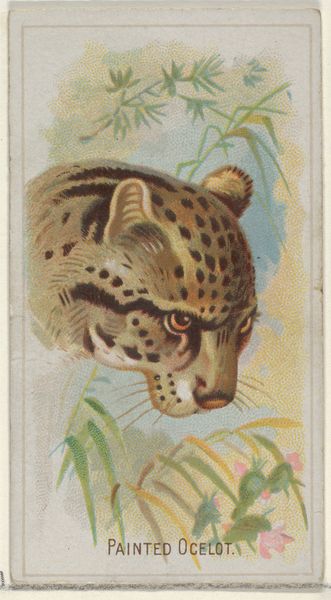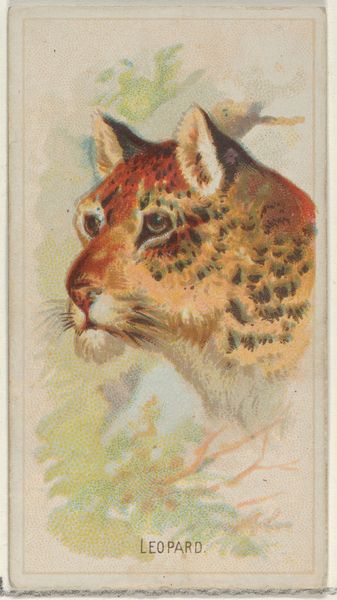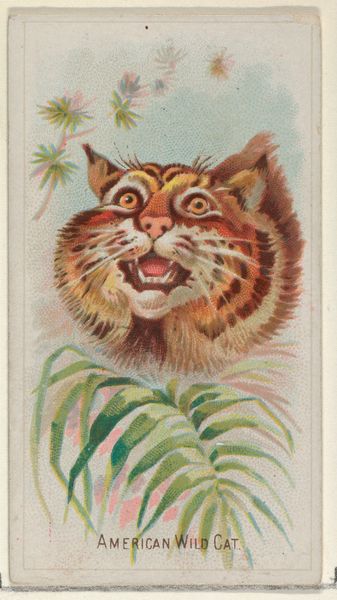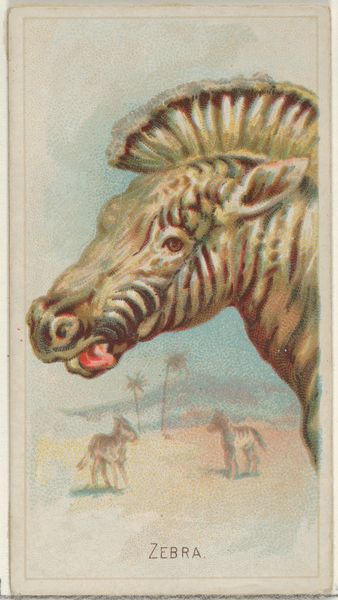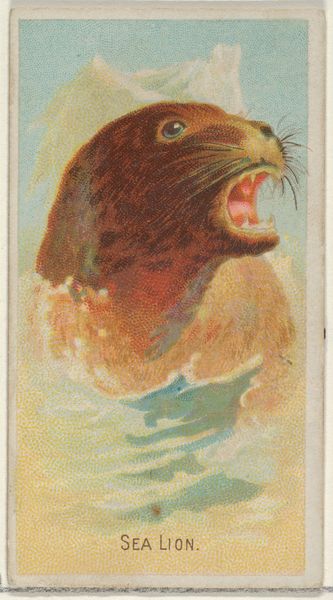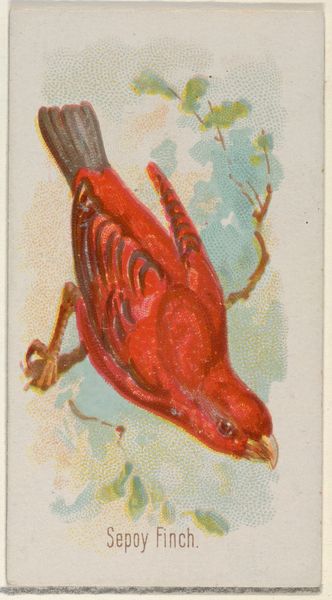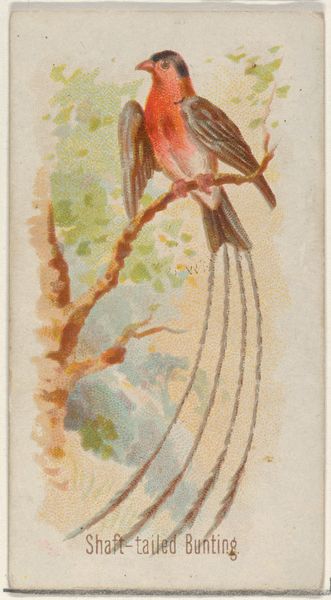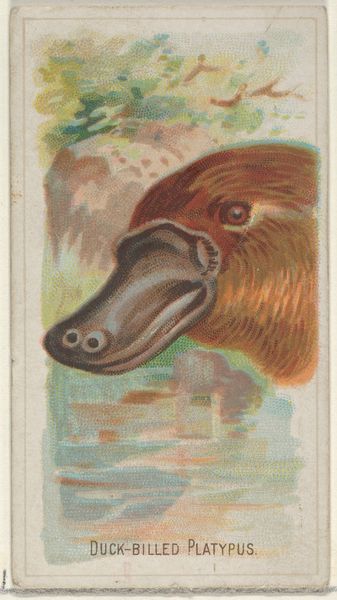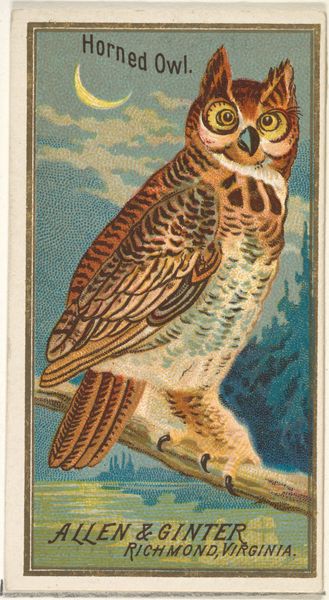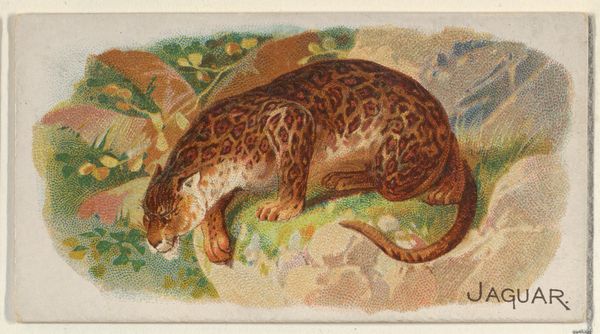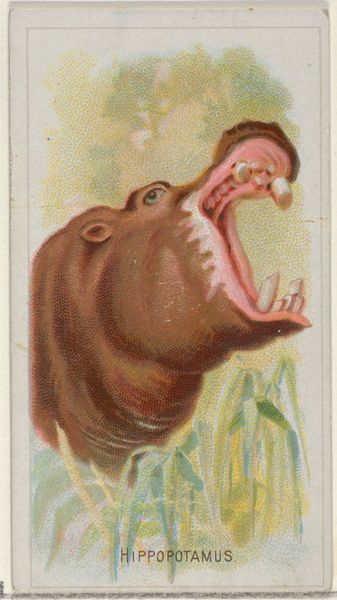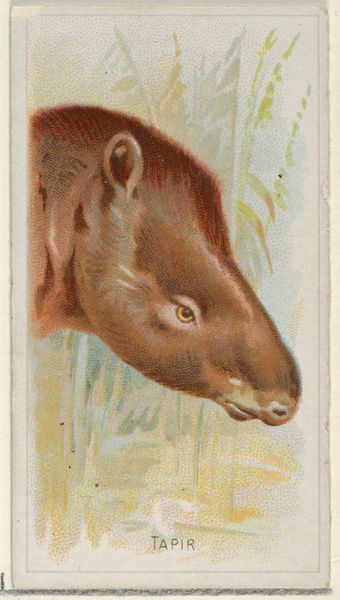
Jaguar, from the Wild Animals of the World series (N25) for Allen & Ginter Cigarettes 1888
0:00
0:00
#
animal
# print
#
coloured pencil
#
watercolour illustration
Dimensions: Sheet: 2 3/4 x 1 1/2 in. (7 x 3.8 cm)
Copyright: Public Domain
Editor: This striking image, “Jaguar,” created in 1888 by Allen & Ginter for their “Wild Animals of the World” series, uses coloured pencils and print. It feels both exotic and slightly… commercial? What jumps out at you when you see this? Curator: Well, I immediately think about the conditions of its production. These were trade cards, right? So, considering the scale and means of their manufacture becomes paramount. How many of these were printed, distributed with cigarettes? What kind of labor went into both the design and the printing process? Editor: That’s fascinating! I hadn't really considered the mass production aspect. So, it's less about artistic intent and more about the socio-economic factors at play? Curator: It’s about both, wouldn’t you say? The image itself promotes a certain exoticism and connects the consumer with images from faraway places. Think about the paper itself, where was the source, the labor conditions of these industry. Also consider the culture surrounding tobacco at the time—what message was this type of art trying to communicate? It is realism a method to represent truth in that time? What does this type of Realism try to represent in an mass printed format? Editor: That is quite telling about the period. It highlights how commercial imagery can both reflect and shape cultural values. Curator: Precisely! The consumption of the cigarettes, coupled with the visual consumption of the image, speaks volumes. We can think the idea of consuming a print, the desire of getting them as collection pieces for albums, Editor: That perspective completely reframes how I see this piece. It’s more than just a picture of a jaguar; it’s a snapshot of an entire industry and its impact. Curator: And don't forget its ongoing legacy. Many collect these today, thus continuing its chain of production, meaning, and value.
Comments
No comments
Be the first to comment and join the conversation on the ultimate creative platform.
